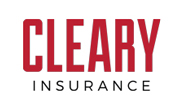Cleary Community Outreach
Presented by Michael Regan
Cleary Insurance is a member of the National Association of Surety Bond Producers (NASBP), which is the national professional organization for agencies that have a specialty in surety bonding. We take pride in reaching out to contractors who may need assistance when obtaining surety bonding. Small, emerging, disadvantaged, minority, women owned, and service disabled are examples of contractors that may need assistance.
As part of the outreach, Mike Regan has been a presenter for surety bonding on numerous occasions including for the US Department of Transportation, The US Small Business Administration and at numerous trade organizations. Most recently, Mike was a presenter at Suffolk Constructions “access to capital” session of their Trades Partnership Program. This is a program they run for contractors who would qualify for one of the categories mentioned above and would like to do business with Suffolk Consruction.
The outreach is an annual eight week program and will include Mike’s return in 2017 as a presenter on surety bonding.
Click here to read the NASBP Pipeline article.
Effect of Interest Rates on Investing
Presented by Douglas W. Greene CFP® CLU®
As a result of the prolonged Federal Reserve’s involvement in stimulating the economy, interest rates are and have been at extreme lows. Over the course of the next five to ten years, the Fed is expected to pull back its control in a way which will allow rates to increase, having an inevitable effect on the markets as a whole.
As a result, portfolios heavy in bonds may experience poor performance in the market during periods of rising interest rates. When rates in the open market are offering higher credited rates to lenders, investors tend to sell their existing debt, resulting in falling prices. Longer term debt is particularly more sensitive to interest rate risk.
Likewise, rising rates can have a negative effect on the Consumer Cyclical sector, as the fact that the general public will tend to have less discretionary spending money due to more expensive borrowing and potential price hikes. However, investing in bank equities can be attractive in anticipation of these times, as they are able to finance out at more profitable margins.
Ice Dam Guide
What is an Ice Dam?
- Ice dams are ridges of ice that form at the edge of a roof and prevent melting snow from draining off your roof.
- Water that backs up behind the dam can leak into your home and cause damage.
- Walls, insulation and ceilings are at the greatest risk for damage from an ice dam.
How to Prevent Ice Dams?
- Proper insulation: Attic insulation should have an R value of 30.* Insulate around areas that may allow for heat to escape easily –
lights, bathroom fans, sky lights, etc. - Proper Ventilation: Allow heat to escape in other ways than the roof. Investigate gable vents, ridge vents and soffit venting.
- Installation of Roof Leak Barrier: A rubberized film that gets installed under roof shingles to block water from leaking into vulnerable areas.
- Keep all drains, downspouts and scuppers free of debris.
- Maintain trees and plants that grow near your roof to prevent accumulation that may clog or slow roof drainage.
- Get an energy audit done of your home to identify potential areas of concern.
- * R value is how well the material used to insulate can function at keeping the heat where it needs to be. The higher the value the
better the insulating power.
What Other Factors Contribute to Ice Damming?
- Complex roof designs
- Skylights
- Dormers
- Vaulted Ceilings
- Periods of unoccupancy greater than 30 days
What to do if you have an Ice Dam?
- Remove the first three to four feet of snow from the roofline with a roof rake or soft bristled broom.
- Warning: Be extremely careful while removing snow from your roof.
- Make sure the ladder is secure.
- Beware of falling snow and ice as you clear the roof.
- Consult with a roofing professional when dealing with snow removal.
- If the home is too tall to reach the roof then hire a roofing professional to clear the snow.
- Contact your Insurance agent as soon as possible.
Sources:
https://bct.eco.umass.edu/publications/by-title/preventing-ice-dams,
http://www.gaf.com/Roofing/Residential/Products/Leak_Barriers,
Be sure to contact licensed professionals to assist with ice dam prevention techniques.
Click here to view more information on the MAPFRE website.
